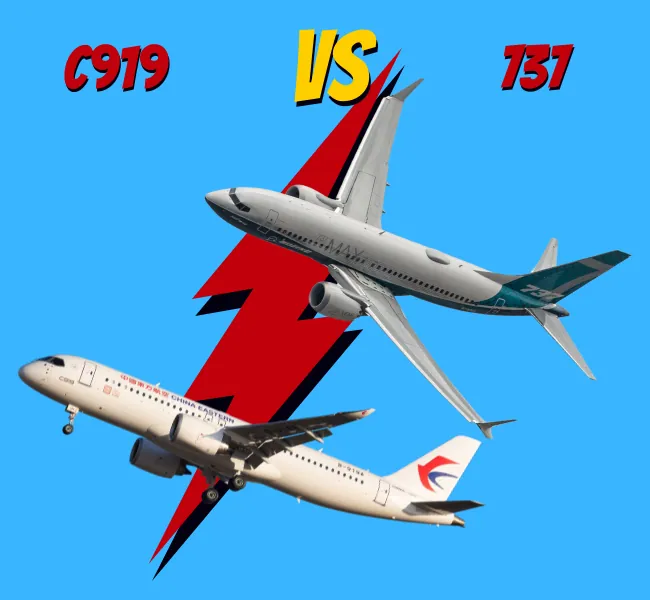China’s ambitious COMAC C919, its first domestically developed narrow-body jet, has been in the making for over a decade, aimed at challenging Western giants like Boeing and becoming a dominant player in the global airspace. In this comparison (C919 vs 737), we delve into the design and technology of both aircraft to assess how China’s reliance on Western parts might impact its aspiration.
Boeing’s Decades of Experience
Boeing, an American aviation behemoth with over a century of experience, has been a pivotal player in the global commercial aviation industry. In contrast, China’s foray into the aviation sector began in the 1970s, but for decades, it relied on Western companies like Boeing for its airliners. Boeing became a go-to company for China’s aviation needs, with significant sales of large jetliners.
COMAC’s Quest for Self-Reliance
Recognizing its over-dependence on Western jetliners, particularly Boeing and Airbus, the Chinese government established COMAC (Commercial Aircraft Corporation of China) in 2008. COMAC’s mission was clear: develop a domestic airliner industry capable of competing on a global scale. To achieve this goal, COMAC has received substantial government aid, estimated to be between $49 billion and $72 billion.
C919 vs 737: A Technological Comparison
Both the COMAC C919 and the Boeing 737 Max 8 are narrow-body aircraft with a single aisle, similar in size and passenger capacity. They also share common engines, both sourced from CFM, a joint venture between General Electric and Safran of France. The engines, known as the LEAP-1 series, are comparable in terms of technology. The LEAP-1B is used for Boeing, while the LEAP-1C powers the C919.

However, the challenge for COMAC lies beyond engines. A successful commercial airliner requires a myriad of systems, including avionics, landing gear, mechanical systems, and more. Boeing, with decades of experience, has established robust relationships with global partners and suppliers, ensuring access to cutting-edge technology. Most of these suppliers are close allies of the United States, making Boeing’s aircraft an international creation.
Reluctance from Foreign Suppliers
COMAC faces a significant challenge in sourcing state-of-the-art components. Some foreign suppliers have been hesitant to provide advanced components due to concerns about intellectual property (IP) infringement. This has led to the C919 incorporating older technology compared to its Boeing and Airbus counterparts. IP concerns have also raised questions about geopolitical tensions affecting the C919 program.
Geopolitical Risks
Geopolitical factors may pose a considerable risk to the C919 project. The United States has accused China of attempting to steal advanced technologies for military use. This has led to trade restrictions and curbs on technology access for Chinese companies. COMAC has faced challenges related to its inclusion in the U.S. Entity List, which limits its access to American technology and funding. While it was later removed from the list, concerns about IP infringement and geopolitical tensions linger.
Future Challenges: C919 vs 737
Even if COMAC overcomes these vulnerabilities, it faces additional hurdles. Developing consistent production quality and establishing a global support system for spare parts and maintenance are vital challenges. Boeing, on the other hand, contends with market challenges in China due to trade tensions and the grounding of the 737 Max series.
While COMAC’s C919 marks a significant milestone, the journey to rival Boeing will be long and fraught with challenges. As China seeks to establish itself as a global aviation player, it must navigate IP concerns, geopolitical risks, and the complex task of building a sustainable support network for its aircraft. The aviation industry is famous for its technological demands and rigorous standards, making COMAC’s aspirations an ambitious undertaking.
In a rapidly evolving global aviation landscape, COMAC aims to soar to new heights, but the path ahead may be characterized by turbulence and uncertainty







